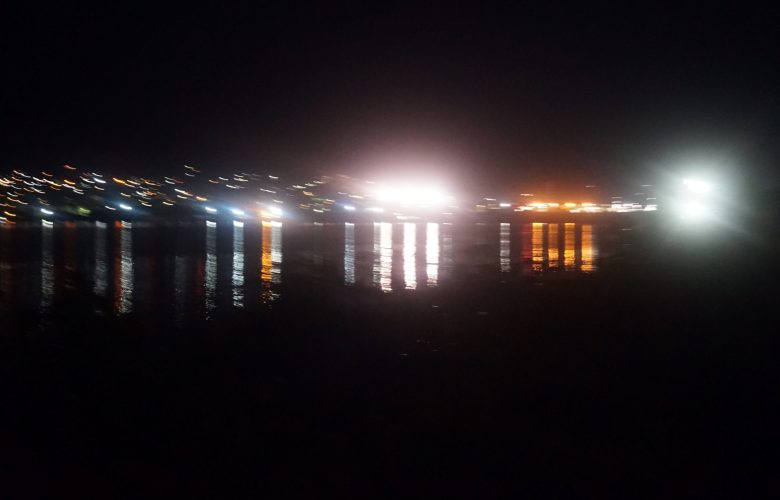It is hard to believe that the world that was once veiled in darkness at night, only lit by fires to keep its inhabitants warm, has now become a glowing disco ball of brightness. This drastic change shows light as an essential part of human society that is often overused, creating the issue now referred to as light pollution. Sarah Appleton from the National Geographic Society (2022) defines this concept as the overuse of artificial outdoor lights.
Light pollution, also known as luminous pollution, is characterised as glare, light trespass, clutter, and sky glow. According to the National Geographic Society, glare refers to extreme lighting that may result in optical irritation, and light trespass occurs when light invades areas that do not require illumination. Clutter refers to too many lights grouped, creating a confusing visual effect. Sky glow, as the name suggests, is seen when artificial lights off buildings shine so bright they create a radiance that illuminates the night sky, making it difficult for people to see the stars and other celestial objects.
This phenomenon is increasingly problematic globally as the world becomes more industrialised. Hence light pollution predominantly affects developed countries as is evident by a scientific study by Falchi et. al (2016) stating that 99% of the areas affected by light pollution are the U.S. and Europe. Luminous pollution has become a glaring problem in more ways than one because it affects human health and wildlife.
As lights litter the earth with colourful glimmers, it pollutes the human body. Excessive lights at night can cause a plethora of ailments. Samatha Tracy from Harvard University (2020) explains that artificial light disrupts the circadian rhythm, an internal 24-hour sleep-wake cycle linked to the natural day and night of the earth. This disruption results in sleep deprivation and stress as the body’s melatonin production reduces. Therefore the brain is significantly affected by light pollution. Tracy adds that this disruption in the body’s natural sleep pattern due to artificial lights may cause malignant cancers since altering sleep patterns disturbs our cancer suppression genes.
In addition, while the picturesque night sky may be beautiful to people, it has a disturbingly deadly impact on wildlife. Species all around the world are dying due to light pollution. Artificially illuminated beaches not only confuse hatchlings using the moonlight as a guide to the sea, but also lead to less reproduction as female turtles avoid these beaches, thus bringing the sea turtle population closer to extinction (Brei, et. al, 2016, pg. 2-3). In Puerto Rico and other Caribbean countries, a similar detrimental effect is evident on turtles along their coasts. This deathly cycle of light pollution is apparent in birds who use the stars and moonlight to direct their path when migrating. However, artificial lighting of buildings and cities causes them to veer off course and crash into buildings causing their death (International Dark Sky Association). The battle of artificial lights and animals surpasses vertebrates as even insects feel the heat of this pollution. Many insects are attracted to lights and die on impact due to the hotness of light sources (National Geographic Society). Even the amphibians in the wetlands are affected by luminous pollution. Toads and frogs that make a mating sound to indicate availability for reproduction are disturbed by the invasion of luminous pollution in their surroundings, causing less mating and species decline (International Dark Sky Association). Turtles, birds, insects, frogs and toads are only a few animals that are negatively affected by light pollution, and unfortunately, many more organisms are subject to these ill effects.
To mitigate these harmful effects, in the Caribbean, the Puerto Rican Government has set an example in addressing light pollution from as early as 2008 through the passing of the legislation for the Control and Prevention of Light Pollution, which outlines rules concerning houses along the coast in turtle nesting areas (Castro-Prieto and Diez, 2022). Other countries like the Republic of Korea have implemented similar legislation. Further efforts to reduce luminous pollution are acts by non-profit organisations like the National Wildlife Association, which has led a lighting retrofit program with the Puerto Rican Government to search for sources of light pollution in turtle areas (Castro-Prieto and Diez, 2022). Internationally, some people have stopped using flood lights because they are a form of light trespass, and some urban areas have a lights-out program to ensure complete darkness when birds are migrating (National Geographic Society). Additionally, to alleviate eye strain, people are reducing their blue light exposure by wearing blue light glasses or sunglasses at night to reduce the intensity of bright lights on their eyes. Also, the International Dark Sky Association educates people about light pollution and certifies parks that use less light. Lights brighten the environment, but not everywhere needs to be lit, so as the world advances, perhaps more will be done to tackle light pollution before it causes further harm.
Article by Janeilla Darien
Photos by Ian Boxill
References
Appleton, S. Mapmaker: Light Pollution. National Geographic Society. (n.d.). https://education.
nationalgeographic.org/resource/mapmaker-light-pollution.
Brei, M. Strobl, E. & Pérez-Barahona, A. (2016, March). Environmental Pollution and
Biodiversity: Light Pollution and Sea Turtles in the Caribbean. Journal of Environmental
Economics and Management 77(2), 2-3. DOI:10.1016/j.jeem.2016.02.003.
Castro-Prieto, J. & Diez, C. E. (2022, June 16). Tackling Light Pollution: Lessons from Puerto
Rico. SWOT. https://www.seaturtlestatus.org/articles/tackling-light-pollution-lessons-from-
Puerto-rico.
Falchi, F., Cinzano, P., Duriscoe, D., Kyba, C. C., Elvidge, C. D., Baugh, K., Portnov, B. A.,
Rybnikova, N. A., & Furgoni, R. (2016, June). The New World Atlas of Artificial Night Sky
Brightness. Science Advances, 2(6). https://doi.org/10.1126/sciadv.1600377.
Light pollution effects on wildlife and Ecosystems. International Dark-Sky Association. (2016,
September 12). https://www.darksky.org/light-pollution/wildlife/.
Light pollution. National Geographic Society. (n.d.). https://education.nationalgeographic.org
/resource/light-pollution.
Tracy, S. (2020, October 13). I can’t sleep… can you turn off the lights? Science in the News. htt
ps://sitn.hms.harvard.edu/flash/2020/i-cant-sleep-can-you-turn-off-the-lights/#:~:text=Expo
sure%20to%20artificial%20light%20disrupts,daytime%20sleepiness%20and%20sleep%20
disturbances.










